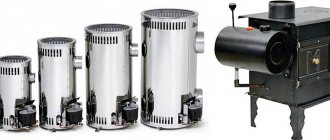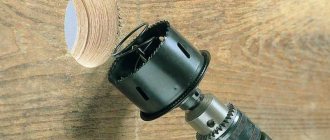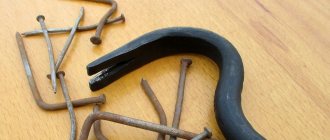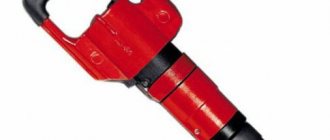A washer is a fastener placed between a nut and a structural element to be fixed or a rod-type fastener - a screw, a self-tapping screw, or an ordinary screw or bolt. Thus, the supporting surface area increases. This factor, in turn, prevents the self-unwinding of the connection. The spring split washer, known as the Grover, is most widely used in the mechanical engineering industry. Due to the presence of certain design features, it is simply impossible to do without it in some situations.
Grover washer - the history of the creation of a new type of locking connection according to Gosstandart
At the end of the 19th century, the mechanical engineering field began to develop at a fairly high speed, which required new, more reliable connection methods. The quality of threaded connections at that time was low, and conventional versions could not withstand oscillatory loads and strong vibration. Due to this effect, the strength of the connection is significantly reduced, and other common problems associated with loss of tightness could arise. The situation was significantly improved by a spring washer, which significantly increased the strength and reliability of connections in the event of a vibration load.
The new type of connecting element is quite simple, which determines low cost and reliability in use. GOST 6402-70 spring washers determines the use of certain materials in their production. The key points are:
- Reminds me of a regular spring coil.
- The gap diverges in the direction opposite to the movement of the nut, thereby eliminating the possibility of unscrewing.
- The rotation is fixed due to a special edge of the grower, which digs into the surface.
Download GOST 6402-70
When designating and marking a spring washer, it is indicated what material is used and the diametrical size. It is worth considering that not all materials are suitable for the manufacture of the product in question, since it is necessary to ensure high performance characteristics.
Engraving technique
Initially, black paints were used to make engravings, with which it was impossible to draw spots, create chiaroscuro, or use other artistic techniques. Such limitations did not allow using all the advantages of engraving and created a lot of problems, which the Venetian Hugo da Carpi managed to solve. The inventor proposed using several boards with the same pattern, but with different paints applied to it.
The new technique was called color woodcut. It made it possible to use engraving to create artistic masterpieces, but it was labor-intensive and therefore was not widely used. Only at the end of the 19th century did it become possible to use this type of engraving on a large scale.
Engraving, or woodcut, regardless of the color or paint used, made it possible to make many identical drawings. The original print was used until the image embossed on it was completely erased.
Wood was not used as a board for drawing for long; already at the end of the 15th century, engravers learned to make chisel engravings on metal, in particular, copper boards were used. Copper made it possible to independently determine the length and width of the lines, the drawing was deeper, the print was clearer and more saturated. Thanks to mastering the technique of engraving on metal, artists were able to create quite complex designs.
The development of engraving art could not stop at using just a few materials. At the beginning of the 17th century, engravers invented a new technique for creating boards from which an impression was made, called “etching.” From then on, the board was influenced not only mechanically, pressing it against the material on which the imprint was to appear, but also chemically.
The new execution technique made it possible to improve the art of engraving, creating not individual images, but portraits, still lifes, and satirical drawings. Especially if color engraving was used to make the print. For some time now, any work of art could be turned into an engraving.
Grover washer options
Most often, the product in question is used to ensure a reliable bolted connection. At the same time, it is often installed with a conventional design to significantly increase the contact area. Due to this, the reliability of the connection is significantly increased. Looking at the product drawing, two different versions can be noted:
- The first one is considered the simplest. Considering the din 127 spring washer, we note that it has a different hole diameter, as well as coil thickness. In this case, a certain angle of deviation of the turns from the central axis is noted.
- The second version is characterized by greater complexity in production. However, due to the complexity, the mechanism can withstand large dynamic and multidirectional loads.
The din127 m8 galvanized washer has become quite widespread. Due to special treatment, the protection of the surface from environmental influences is significantly increased. Also sold is a din 7980 m6 washer, which is characterized by its own specific features.
Most products have right-hand winding, due to which the production of hardware is carried out in a clockwise direction. But some versions are made with a left-hand turn.
Indoor or outdoor
A treasured marijuana bush at home is a dream for fans of this plant. Suitable places for growing:
- In the living room, using a grow tent or grow box;
- Pantry;
- Utility premises: garage, barn, cellar, etc.;
- Balcony, loggia;
The space for growing is limited only by imagination and directness of hands; some craftsmen collect decent yields of hemp even in system blocks.
When selecting premises, the following factors should be taken into account:
- The ambient temperature should be in the range of 20 – 30C, which corresponds to most residential premises;
- Access to the electrical network for connecting equipment (light, ventilation, etc.)
- Moderate humidity.
The article Growing Marijuana at Home describes in detail the procedure and comparison of different approaches.
By choosing open ground for growing cannabis, the grower makes his task somewhat easier. Costs are significantly reduced, there is less stress when guests arrive, and the role of plant growth regulator returns back to nature.
Disadvantages of the Grover Washer
Before paying attention to the disadvantages, we first note the main advantage - the simplicity of production technology and low cost. However, there are also several serious disadvantages that need to be taken into account:
- In some cases, the force of the spring washer is not enough due to the high dynamic loads that arise during operation of the mechanism.
- A large tension force causes the grower to turn into a regular plate. Fixation is provided only to a small extent.
- In almost all cases, the connecting element in question cannot be reused due to severe deformation.
When creating conventional devices, a spring washer is used due to its low cost. In some cases, the possibility of replacing it with another product with a similar scope is considered.
Historical background
The first engravings appeared in the East. Around the 6th century AD. e. Chinese craftsmen used engraving techniques to create seals, brands and impressions. This type of engraving was devoid of grace and bore little resemblance to works of art; engravings were created for purely practical purposes. Impressions were made on soft wood. Wood engraving is called woodcut.
Engraving
The art of engraving became known to Europeans only at the end of the 14th and beginning of the 15th centuries. The new technique was used to make playing and geographical maps, books and documents. For example, engraved sheets with imprints of the Holy Scriptures and pictures depicting biblical scenes were distributed in Germany.
In Russia, the engraving technique spread only in the second half of the 15th century. At the same time, the first engravers appeared.
How can I replace a spring washer on a Grover?
You can fix the nut using a variety of elements; quite a lot of them have been produced. Grover, another name for a spring washer, is often replaced with the following:
- The nut is self-locking. This product is characterized by the fact that in the upper part there is a plastic rate, which is responsible for damping the vibration load and unwinding. It is worth considering that difficulties in manufacturing the product cause a significant increase in its cost, but the effectiveness of such a nut is quite high.
- Disc type washer. It can also be installed instead of the original grower, and is characterized by lower cost and greater reliability.
- There is also a crown nut. It is required when drilling a counter fastening element and then placing a cotter pin. The reliability of the connection in this case is quite high, but it is characterized by steps.
- Gear type flange. The flange has notches that are fused with the nut. The notches ensure reliable fixation of the connection.
- Lock washer. During its manufacture, a large number of teeth are created that provide fixation.
- Plates with antennae. In this case, one of the tendrils is selected into the part, and the rest are folded over the turns. There are simply a huge number of similar versions on sale, so it is possible to choose the most suitable one.
- Wire locks. This fixation option has become widespread due to its low cost.
As a rule, the choice is made depending on the operating conditions.
Growing marijuana
The preparatory stages are over, let's talk about the process of hemp cultivation itself. Conventionally, it can be divided into 5 stages:
- Germination and first shoots;
- Vegetative stage;
- Bloom;
- Harvesting;
- Drying, curing in preparation for further storage.
Germination
With the germination of hemp seeds, everything is very clear; the main thing is to create optimal conditions for awakening life in the seed. After the seed has sprouted for the first time, it will need a lot of light, observing the light regime of 18/6. When the sprout has grown stronger and has sprouted its second or third pair of leaves, it can be transplanted into a pot or planted in open ground.
At this stage, hemp is gaining strength and growing by leaps and bounds. It is during this period that the grower has the opportunity to shape the future hemp bush using methods to increase the yield of hemp. The active growth of cannabis is accompanied by an immodest appetite for the elements: nitrogen, magnesium and calcium.
During the vegetative stage, hemp actively gains green mass, which commercial growers take advantage of by cloning it, although this method only applies to photoperiod varieties. There is also a serious difference between the flow of vegas in indica and sativa dominant varieties.
Bloom
The sweetest stage of growing cannabis is when every day becomes a challenge. At this time, pre-flowers appear by which the sex of the cannabis can and should be determined. From the beginning of flowering until harvest, the colas begin to swell and bend from the weight of the inflorescences, and the emitted aroma becomes more intense with each passing hour. Fox tails appear, trichomes cover the inflorescences and leaves with a thick layer. Hemp at this time needs increased nutrition, in particular, the dosage of phosphorus and potassium can be doubled.
Harvesting
The end of flowering is characterized by darkening of the foxtails and cloudiness of the trichomes; if more than 50% of the glands have taken on an amber color, then it is time to begin harvesting.
BUT! To collect a truly powerful and tasty stuff, you should predict the moment of harvesting 2 - 3 weeks in advance, this will help to shed the plant, i.e. water with clean water without fertilizing, which will help get rid of residual fertilizers and make the taste cleaner and more pleasant. Do not be alarmed by the yellowing of the leaves; this is a normal reaction.
The last watering is recommended to be done 1 - 2 days before cutting the bush, it is also recommended to reduce the humidity level to the maximum. These procedures will make hemp manicuring easier and increase the potency of the resin.
Drying
Mistakes at this stage are unforgivable. Freshly picked manicure buds still contain moisture, which negatively affects its taste and complicates storage. To prevent the appearance of mold and drying out, it is better to observe the following conditions:
- Temperature within 18 – 24 C;
- The complete absence of light, under its influence, THC molecules disintegrate;
- Air humidity no more than 50%;
- Good ventilation.
If everything is done correctly, drying will not take more than 8 - 10 days, after which you can cure it if you wish.
Brief conclusion
Growing cannabis is a labor-intensive and interesting process, and the joy of the first completed grow is never forgotten. “If you want to learn to swim, swim” - this phrase is also suitable for growing marijuana, the skill comes with experience, fortunately there is a large selection of inexpensive autoflowering varieties that you can get your hands on and understand the basics of growing and, maybe, after a few years, your variety will be awarded at the next High Times cannabis cup.
- Sidbank Semyanych (European Countries) Feminized Autoflowering Spiritual Peace Skunk X Lowryder
- Kannabia Seeds (Spain) Feminized Autoflowering Strong euphoria Kaboom X Ruderalis Indoor: 400 g/m² Outdoor: 180 g/plant Sativa dominant 13%
*All information provided is for informational purposes only and does not constitute guidance or a call to action.
**We remind you that the use of marijuana seeds as seed material (growing hemp for the purpose of obtaining a plant) is prohibited by the Criminal Code of the Russian Federation. You can find out more about the law here.
Varieties, material and manufacturing methods
The product in question is manufactured taking into account the standards established in GOST 6402-70. It specifies what materials and methods should be used. Among the features of the choice of metal, we note the following points:
- It is allowed to use steel, as well as bronze and some other non-ferrous alloys.
- Hardness should vary from 40 to 48 HRC when using common steel grades. If bronze is used, the value is at least 90 HRC. The weight and some other indicators largely depend on the type of material used.
- During production, various methods can be used, but the appearance of cracks, scale, burrs and other defects is not allowed. In some cases, only minor defects are acceptable that do not affect the performance characteristics of the product.
- To identify the main qualities, a flat washer is subjected to various tests.
A situation often occurs when, in the manufacture of a spring washer, special spring steel is used, which has special performance characteristics.
To achieve the required properties, heat treatment is carried out, due to which the hardness increases and the brittleness decreases.
What you need to know about the specialty
The profession of an engraver by its type belongs to a qualified category of workers whose task is to perform engraving both manually and using special engraving machines. As a specialist, an engraver must be able to reproduce drawings of any complexity.
Hence the requirements that are presented to this specialist:
- must master the art of drawing using special hand tools, such as: gravers, cutters, various types of needles;
- be able to use different types of acids;
- be able to use an electric engraving machine;
- be able to create three-dimensional drawings on various materials, such as metal, plastic, wood, glass.
How to install the Grover washer?
In general, the product in question does not differ significantly from the usual version. That is why the installation features include the following:
- Located between the nut and the main element.
- Can be supplied with a regular nut.
It is the ease of operation that determines the wide distribution of the product in question.
Non-rotational mechanism for unscrewing nuts
Non-rotational loosening of a threaded connection can occur as a result of deformation of the threaded fastener itself or the connection as a whole. This can occur as a result of local plastic deformation at the bearing surfaces of a bolted or screwed connection.
When two supporting surfaces, such as parts and bolt heads, come into contact with each other, the asperities on both surfaces are subjected to significant stress. Since the actual contact area can be significantly smaller than its apparent area, very large local stresses arise on these irregularities. The magnitude of these stresses, even under very moderate loads, is higher than the yield strength of materials in a bolted connection (Figure 1).
Figure 2 - Increased contact area with irregularities of the contacting surfaces [1]
This leads to the fact that the surface partially subsides immediately after the completion of the bolted joint tightening operation. This phenomenon is called “drawdown” (English embedding). The proportion of tensile force that is lost due to subsidence depends on:
- the rigidity of the bolt and the connection itself,
- number of surfaces involved in the connection,
- surface roughness and stress levels that act in the connection.
Under moderate loads, initial joint settlement typically results in a 1 to 5% loss of tensile force in the bolted joint within the first seconds after the bolted joint is tightened. When this joint is subsequently dynamically loaded with external loads, further settlement of the joint occurs as a result of the pressures to which its surfaces are subjected.
Loosening of a threaded connection due to subsidence is especially problematic for connections that consist of several thin-walled elements and have a small overall connection thickness.
Application of spring washers and operating features
The scope of application of hardware and the spring washers in question is quite wide. This is due to the fact that they are easy to manufacture and last for a long period. Among the operating features we note:
- Over time, the basic properties decrease.
- Mechanical damage can cause failure.
- Exposure to heat also negatively affects the basic properties.
It is allowed to use a washer of this type in mechanical engineering and other fields. This takes into account that the degree of fixation is relatively low.
Mechanisms for loosening threaded connections
In most threaded fasteners, the strength of the connection is ensured by introducing a large tension load into it. This tension load is created by controlled tightening of the bolted connection.
Figure 1 - Tension controlled bolted connection
Loosening of a threaded connection is the subsequent loss of some of this tension load. This can happen for two reasons:
- Rotational loosening, often referred to as self-loosening, occurs when a fastener, such as a nut, rotates relative to a bolt under external loads, resulting in a decrease in the tensile force in the joint.
- Non-rotational loosening occurs when there is no relative movement between the internal and external threads, but loosening of the threaded connection still occurs.
STO NOSTROY 2.10.76-2012 on locking threaded connections
STO NOSTROY 2.10.76-2012 “Bolted joints” [4] has different approaches to locking different types of joints. This is broadly consistent with the Juncker theory approach.
8.1. Three main types of bolted connections
- Friction (shear-resistant) connections. In these connections, shear forces are perceived by friction forces acting on the contact surfaces of the connected elements as a result of the tension of the bolts to the design force.
- Shear connections. In these connections, shear forces are perceived by the shear resistance of the bolts, and by the resistance of the connected elements to crushing.
- Friction shear connections. In these connections, both the shear resistance of the bolts and the resistance of the connected elements to crushing and friction are taken into account.
Friction connections are tension-controlled connections with high-strength bolts, while shear and friction-shear connections are uncontrolled tension connections.
The theory of bolt loosening
Currently, the recognized theory of spontaneous loosening of threaded fasteners is the theory of Juncker (1969). It was developed based on the results of bolt tests on the Juncker testing machine (Figure 3).
Figure 3 - Junker testing machine [1]
The main provisions of Juncker's theory:
- A well-tightened bolted joint becomes loose as a result of the nut being unscrewed if there is relative movement between the threads of the bolt and nut and between the adjacent surfaces of the nut and the clamped material.
- Transverse dynamic loads create much more serious conditions for self-unscrewing than dynamic axial loads.
- Radial movements under the influence of axial loads are much less than those that arise from lateral loads (Figure 4).
- The most common cause of loosening of bolted joints is not vibration, as is often believed, but movement in the joint, particularly lateral slippage of bolt threads and bearing surfaces.
- If sufficient axial load is applied to the bolt to prevent lateral movement in the joint, then no locking devices are required since friction will hold the joint parts together.
Figure 4 - Transverse movement in a bolted connection [1]
In cases where slippage in the connection cannot be avoided, for example, in connections to compensate for thermal expansion, it is necessary to use special measures and devices to fix the threaded connection, for example, in the case of a bolted connection, locking the nuts.
Locking properties of nuts
Several dozen different types of locking elements—locking nuts—are used in industry. They all have a common principle - to jam the threads of the nut onto the threads of the bolt. This is achieved by various methods: mechanical or chemical. Mechanical methods include lock nuts with deformed threads, nylon and steel locking inserts. Chemical methods are based on increasing friction between threads by jamming them by introducing special chemical compounds, for example, well-known compounds like Locktite.











